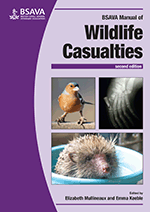
Full text loading...

Rabbits are one of the most common wild mammals found free-living in the British countryside and are widespread throughout mainland and island Britain. Hares are markedly less common; the brown hare is found well distributed throughout the UK, except northern Scotland. Common reasons for presentation include apparently abandoned neonates, trauma (predator attacks and road traffic accidents) and diseases such as myxomatosis. This chapter covers: ecology and biology; anatomy and physiology; capture, handling and transportation; clinical assessment; first aid and hospitalization; anaesthesia and analgesia; specific conditions; therapeutics; rearing of kits and leverets; rehabilitation and release; and legal considerations.
Rabbits and hares, Page 1 of 1
< Previous page | Next page > /docserver/preview/fulltext/10.22233/9781910443316/9781910443316.16-1.gif

Full text loading...

















